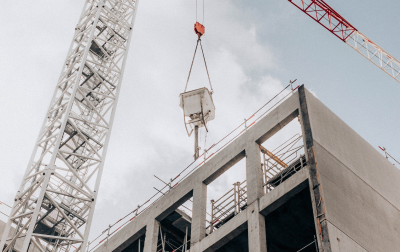
Material and Cost Estimation
Preconstruction expert Steve Dell’Orto of ConCntric® shares insights on estimating best practices
By Steve Dell’Orto, Founder & CEO, ConCntric®
Material and Cost Estimation of today is not any of three critically-needed contributions for a project’s stakeholders’ success:
It is not holistic preconstruction.
It is not currently a reliable nor accurate driver of great results for any stakeholder.
It is not getting less resource intensive or any easier.
Game Changing Opportunity or Insurmountable Challenge?
The role of the builder in the preconstruction/design phase is becoming more and more critical to the success of the project. The expectations that the builder be the leader of the process continues to grow.
In the development of a project — be it a hospital, office building, highway overpass, utility infrastructure, multi-family residential tower, or manufacturing facility — there are three major stakeholders involved in its success — the asset owner/end-user, the designers and the builders. All three are critical to the project’s success. Furthermore, the cost of the project is the bottom-line resultant of the convergence of the programmatic needs, site, design, and financing information developed during the phase of the project’s lifecycle prior to physical construction — otherwise known as the ”preconstruction phase.
The majority of the overall cost of a project is related to the construction costs of the material, equipment, and labor. As such, the builder, more and more, is the one that is looked upon to lead the process to ensure the design, site conditions, schedule, etc. all converge to achieve the bottom-line cost result. For the builder to meet these expectations, the builder needs to recognize that merely updating the previous estimate and reporting back is not going to lead to success. The builder must embrace the fact that it is the builder that must be the central organizing leader driving the timely and orderly convergence of all of the information to achieve the objectives of all stakeholders. In the face of these increasing expectations, the industry must also reconcile these mounting pressures:
The Experience and Expertise Levels within the Industry is Rapidly Decreasing
- The baby boomer generation is retiring, and the knowledge in their heads is leaving with them without being institutionalized in the company’s processes and data.
- The experience level of the younger generations stepping up to lead roles does not have the experience and years under their belts to proactively lead and guide a project with precision and towards a predictable outcome in the preconstruction phase.
The Speed and Complexity of Business is Rapidly Increasing
- Communication and technology are exponentially increasing in speed and is adding pressure and compressing the timetables involved in properly designing and planning a project thoroughly.
- The members of our industry have not kept up with nor invested sufficiently in the means to leverage the powerful data and unify the many disparate tools to make workflows more efficient.
The Demand for New Projects in the Built Environment is Increasing
- The infrastructure in many countries, particularly the U.S., has surpassed its lifespan and is in dire need of rapid replacement on a scale like never before.
- The U.S. population is expected to grow at a net rate of 20 million people each decade for the next four decades putting further pressure on the demand for all things constructed.
To satisfy the expanding expectations, solve the dilution of talent and experience, catch up to the ever-accelerating pace of business and to also be prepared for a growing construction demand, we need more than incremental improvements. How we perform design and preconstruction services is what the industry needs to not just improve but really disrupt.
We must find solutions that maximize the efficient use of our preconstruction talent’s time and intellect and automate the busy work. We must rid ourselves of redundant work efforts. We must converge all stakeholders’ virtual work environments into commonly shared and accessed ecosystems to draw from a single source of truth.
The solution to these trends is to maximize the use of technology and artificial intelligence to free up the human talent that we have so they can spend more time planning, implementing sounder strategies, brainstorm value-added alternatives, anticipate and eliminate project risks, and fostering teamwork and collaboration to generate the best of the best ideas. All of this massive power and potential can be unlocked if we let the computer do the time-consuming busy work, and harness the data to accelerate decision making and process efficiency. We must augment our teams with advantages such as technology, machine learning, and artificial intelligence to become faster, more efficient, more precise, and yes — more profitable.
For the builder community to have a true impact on the success of a project that will be expected of them, we can no longer rely on estimating the way we had yesterday and even today. We must counter the previous decades’ aversion to the early adoption of new ways and change.
We very quickly need to adapt for tomorrow and keep adapting for tomorrow’s tomorrow.